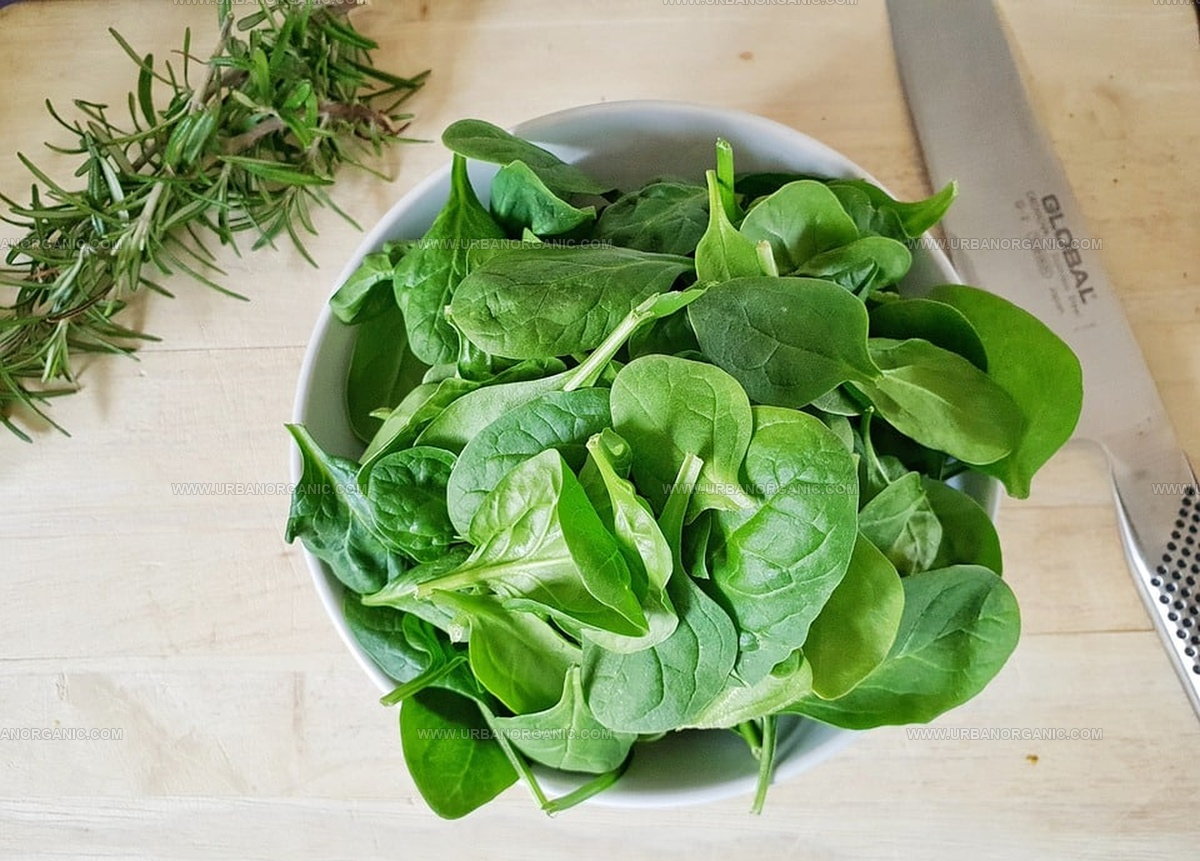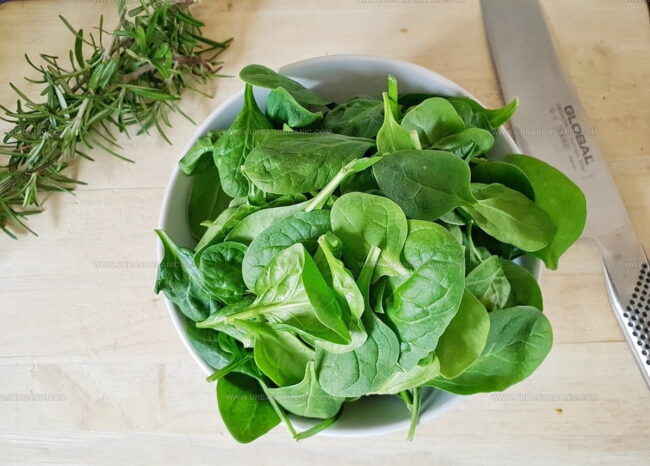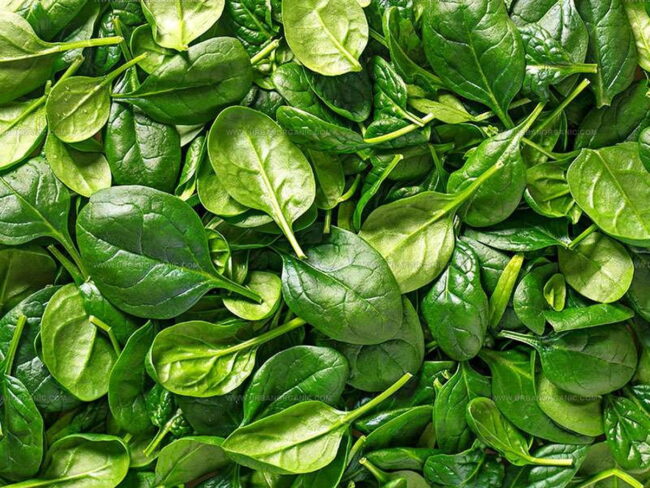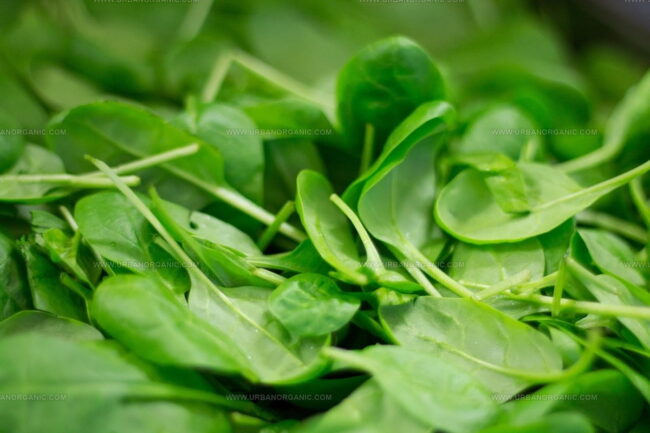What Does Spinach Taste Like? Find Out This Leafy Green’s Flavor!
Spinach, a leafy green powerhouse, often sparks curiosity among food enthusiasts and health-conscious individuals.
Many people wonder about its flavor profile and culinary potential.
Some approach this vegetable with hesitation, unsure of what to expect from its unique characteristics.
Nutritional benefits aside, understanding the taste of spinach can transform your meal planning and cooking strategies.
Leafy greens sometimes intimidate home cooks who lack experience with their distinctive qualities.
Culinary adventures begin when you embrace new ingredients and approach them with an open mind.
Your palate might be in for a delightful surprise when you learn more about this versatile vegetable.
What Is Spinach?
Spinach comes from Central and Western Asia, with roots in Persia.
People believe this dark green leafy plant first grew in that region.
Dark green leaves packed with natural goodness mark spinach as a powerful veggie.
Growing best in cool weather, spinach belongs to the goosefoot plant group, sharing family ties with Swiss chard and beets.
Low calories meet high nutrition in this small green leaf, offering plenty of vitamin C, vitamin A, and iron.
Green leaves with a delicate feel showcase spinach's remarkable nutrition.
Small amounts deliver more health benefits than most other foods.
Shoppers can find spinach throughout all seasons, but peak freshness happens during March to May and September to October.
During these months, flavor peaks and quality stays high, making spinach extra special for health-conscious people.
Flavor of Spinach
Spinach boasts a light, green flavor when raw and fresh, and it's not as crunchy as some other salad greens.
Raw spinach lacks bitterness, making it perfect for salads.
Cooked spinach can develop a bitter taste, so you'll need other ingredients to balance the flavor.
Baby spinach leaves tend to stay milder when wilted compared to larger spinach leaves.
Raw spinach feels similar to arugula with a leafy texture.
Softer than baby kale, it's easier to chew.
Fresh spinach is more compact than cooked spinach, requiring more effort to eat.
Cooked spinach becomes heavier and feels great in soups or dips.
Water makes spinach unique in texture.
Chewing spinach leaves creates a squeaky sensation because of their high water content.
Spinach carries a slightly bitter undertone that contributes to its distinctive mouth feel.
Selecting the right spinach matters for your diet, and you might discover it's a hidden favorite.
Types of Spinach Leaves
Different spinach types might surprise you when preparing them. Most common varieties include savoy, flat, and wild.
They share similar tastes with subtle differences. People who enjoy bitter flavors should try savoy spinach, while wild spinach offers a slightly sweet and earthy taste.
Some might find the leaves' bitterness unappealing.
Spinach falls into three main categories:
Baby spinach comes from flat-leaf plants picked early when leaves remain small, tender, and sweet.
Cooking Ideas for Spinach
Pairing spinach with other veggies can make meals more interesting.
Mixing in some garlic brings a nice kick to any dish.
Cooks often toss this green veggie into different recipes for extra flavor.
Spinach might not win popularity contests among vegetables, but it does have a gentle herbal taste.
People enjoy adding it to salads and sandwiches without much fuss.
When heat touches these green leaves, their flavor shifts to something more sharp and tangy.
Vegetarian cooks know spinach can turn bitter if left on the stove too long.
Small green leaves look almost like grass when fresh and uncooked.
Eating raw spinach doesn't sound super appealing, so most people prefer cooking it first.
Smart kitchen helpers always keep this leafy green stored correctly in cold storage to maintain its quality.
Is Spinach a Healthy Food?
Spinach packs a powerful punch of nutrients that help keep bodies strong.
This leafy green contains important antioxidants that protect cells from damage.
People can enjoy spinach in many different ways, whether raw or cooked.
Eating spinach supports overall health and helps people maintain good physical condition.
Packed with helpful compounds, spinach serves as a smart choice for anyone wanting to boost their wellness and feel great.
Can Help Stop Cancer
Spinach packs powerful nutrients like zeaxanthin and carotenoids that help fight harmful molecules in your body.
These dangerous free radicals can increase risks for different health problems, including several cancer types.
Scientists suggest eating spinach might lower chances of developing stomach, mouth, and esophageal cancer by supporting your body's natural defense systems.
Helps Build Strong Bones
Spinach packs a powerful punch for bone wellness through vitamin K, showing how key nutrients support overall health.
This leafy green helps your body take in calcium more effectively.
One cup of spinach delivers 250 milligrams of calcium, which matters for strong bones and teeth.
Calcium works like a shield, protecting and maintaining bone strength throughout your body.
Good For Your Eyesight
Spinach packs powerful helpers for eye health with lutein and zeaxanthin.
These special antioxidants work hard to protect your eyesight.
Shielding you from vision problems like cataracts and age-related macular degeneration, these nutrients keep eyes strong.
Vitamin A in spinach further supports healthy mucus membranes, which play a key role in maintaining clear vision.
Can Eating Too Much Spinach Be Bad?
Spinach seems healthy, but eating too much every day can cause problems. Here are some reasons to be careful with spinach intake:
These compounds stick to important nutrients like zinc, magnesium, and calcium, making it hard for your body to use them. High levels of purines and oxalates might create kidney stones and gout.
Spinach contains enough oxalic acid to cause calcium oxalate kidney stones. People with gout could experience worse joint pain, swelling, and inflammation from spinach's purine content.
Vitamin K in spinach can change how blood-thinning drugs work, potentially affecting blood clotting processes.
Large amounts can lead to gas, bloating, and stomach cramps because our bodies struggle to break down spinach quickly. Spinach's high fiber makes digestion slower, which might cause diarrhea, abdominal pain, and fever.
Even though spinach provides iron, its fiber content can prevent proper iron absorption.





Michael Thompson
Founder & Culinary Director
Expertise
Classical & Contemporary Cooking Techniques, Global Cuisine Appreciation, Nutrition & Menu Engineering, Sustainable Cooking Practices, Farm-to-Table Cuisine
Education
Southwestern Oregon Community College
Michael grew up in Oregon, where he learned early that food tastes better when it’s fresh, local, and made with care.
After earning his degree from the Southwestern Oregon Community College, he focused his career on teaching others how to cook with the seasons, reduce food waste, and reconnect with what’s on their plate.
Michael keeps his cooking simple, sustainable, and full of flavor. His favorite part of the process? Watching people realize how easy and satisfying it can be to cook a single great meal from scratch.